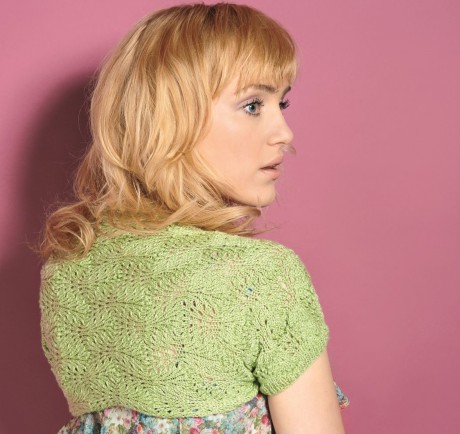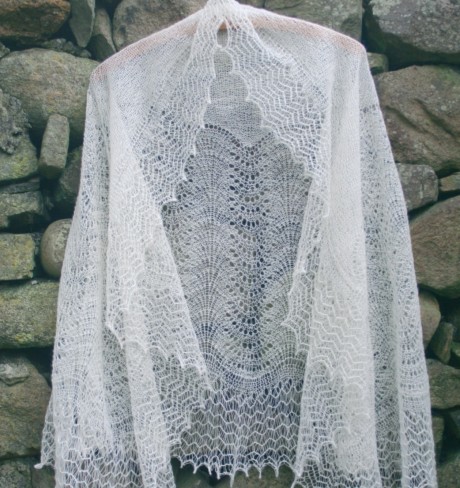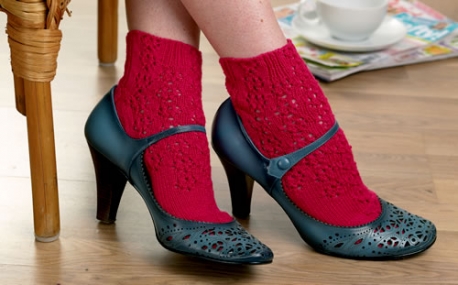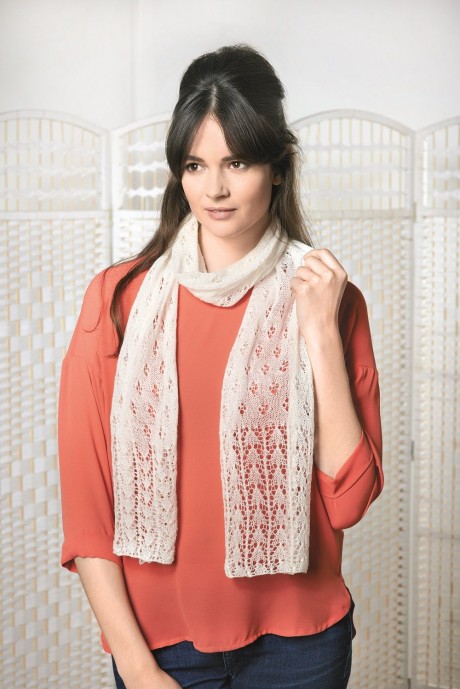Have you caught the lacework bug from our July 2014 lace special? From simple eyelet motifs for beginners to intricate featherweight shawls that can challenge the more advanced, find out more about this beautiful technique!

Ava, a luxurious lacy shrug by Kelly Menzies - formerly available on Let’s Knit Together
The great comeback
During the early part of knitting’s revival in the 90s and noughties, chunky quick-knits were most common, but lately people have been rediscovering the joys of lace. The combination of yarn forward increases and angled decreases creates deliberate holes, or eyelets, and these can be positioned to form patterns and motifs. Regardless of the complexity of the pattern the basic principle is the same.
A good yarn
Thanks to the internet, artisan spinners and dyers are able to sell their beautiful laceweight yarns to a wider market. Many projects made using these finer yarns often require only one or two skeins, and as knitting is now a leisure activity rather than a necessity, there’s nothing wrong with spending a little more on luxurious fibres!
A Shetland classic
One of the most intricate forms of lace knitting comes from Shetland and it’s been a huge part of the island’s heritage since the early 19th century. Worked using 1ply and cobweb weight yarns, it is impressively delicate and features motifs inspired by the coastal landscape of the region. Knitted lace was traded with merchants who then sold their wares in major cities throughout the country. Shawls and veils became popular accessories for wealthy women across the UK, and when Queen Victoria was reported to own a pair of Shetland lace stockings, it gained fame all over the empire.

By the 1930s knitters in Shetland were helping to meet the demand for Fair Isle patterns and lacework declined in popularity. However, there are still some people who celebrate the old techniques. The Eva shawl from island-based company Jamieson & Smith includes many traditional elements. See how the undulating waves contrast with the spiky edging and are reflective of the dramatic scenery of the Shetland Isles. Locally spun 1ply and cobweb yarns are also available to make your project as authentic as possible.

Keeping it simple
Traditional lace knits were really intricate yet some modern projects just use elements of the technique. Julie Ferguson’s lace collar features an easy eyelet motif. Designs like these are good starter-makes for beginners and don’t even have to be worked using fine yarns. This one uses a 4ply cotton so it’s easy to see your stitches, while you could choose lace projects in DK or aran weights, which make lacework a far less daunting prospect.
The next level
Although the stitches and techniques are the same, the difference between basic and advanced lace is to do with the size of the stocking or plain sections between the eyelets. When there are large, solid areas, it gives the project structure and it is much easier to keep track of how the pattern should sit and where your stitches are.
Many lace patterns only feature yarn forwards and decreases on right side rows. Wrong side rows are usually left plain, but in more involved designs, the lace elements will be on both sides of the work.

More than just shawls
Lace isn’t just for shawls and garments. Sock knitting has also enjoyed something of a comeback in recent years and our lace ankle socks socks feature a pretty eyelet pattern.







_333_180_c1.png)
_333_180_c1.png)

_333_180_c1.png)
 Baby
Baby
 Toys
Toys
 Garments
Garments
 Crochet
Crochet
 Homewares
Homewares
 Dolls
Dolls



Share